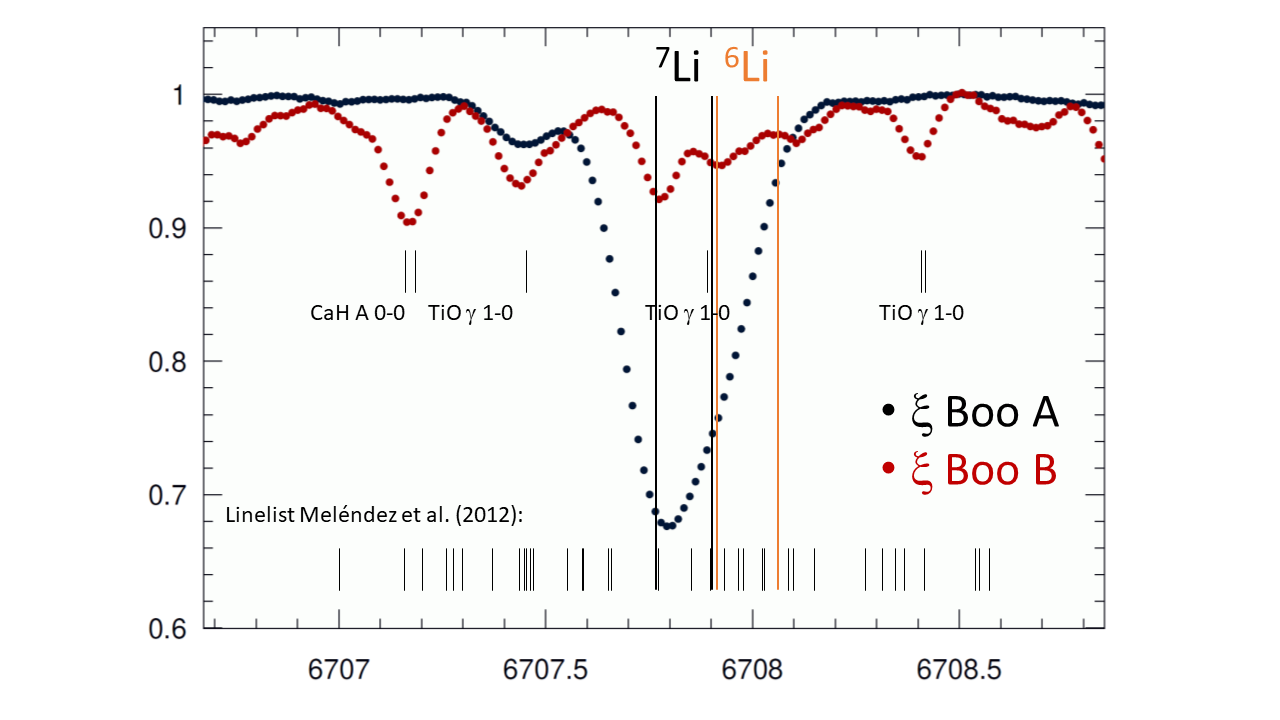A spectroscopic investigation of the lithium resonance doublet in ξ Boo A and ξ Boo B in terms of both abundance and isotopic ratio is presented. We obtained new R=130 000 spectra with a signal-to-noise ratio (S/N) per pixel of up to 3200 using the 11.8m LBT and PEPSI. From fits with synthetic line profiles based on 1D-LTE MARCS model atmospheres and 3D-NLTE corrections, we determine the abundances of both isotopes. For ξ Boo A, we find A(Li) = 2.40±0.03 dex and 6Li/7Li < 1.5±1.0 % in 1D LTE, which increases to ≈2.45 for the 3D-NLTE case. For ξ Boo B we obtain A(Li) = 0.37±0.09 dex in 1D-LTE with an unspecified 6Li/7Li level. Therefore, no 6Li is seen on any of the two stars. We consider a spot model for the Li fit for ξ Boo B and find A(Li) = 0.45±0.09 dex. The 7Li abundance is 23 times higher for ξ Boo A than the Sun’s, but three times lower than the Sun’s for ξ Boo B while both fit the trend of single stars in the similar-aged M35 open cluster. Effective temperatures are redetermined from the TiO band head strength. We note that the best-fit global metallicities are –0.13±0.01 dex for ξ Boo A but +0.13±0.02 dex for ξ Boo B. Lithium abundance for the K5V benchmark star 61 Cyg A was obtained to A(Li)≈0.53 dex when including a spot model but to ≈0.15 dex without a spot model.

Read more: Strassmeier & Steffen 2022, AN, 343, article id. e20220036
